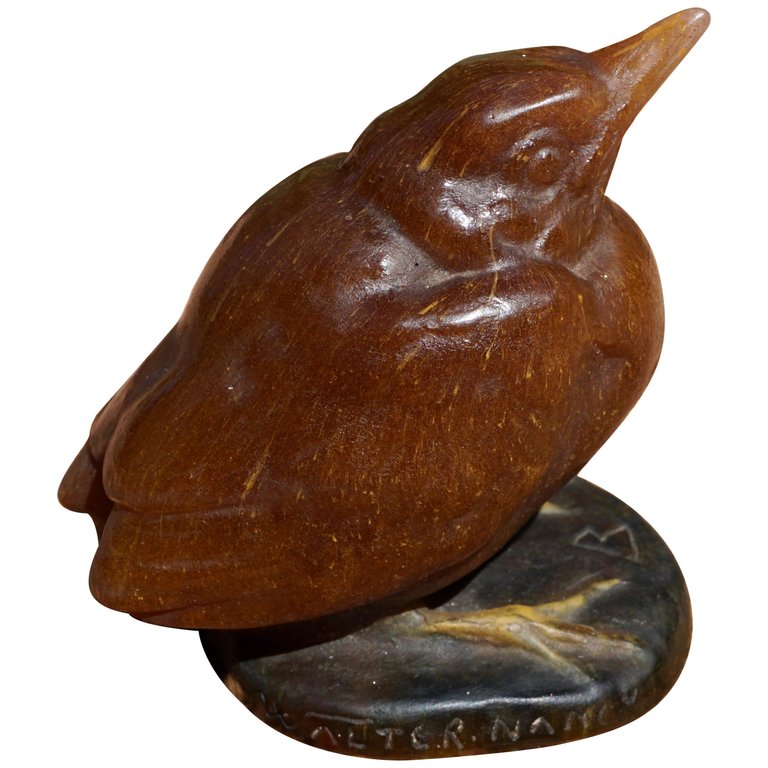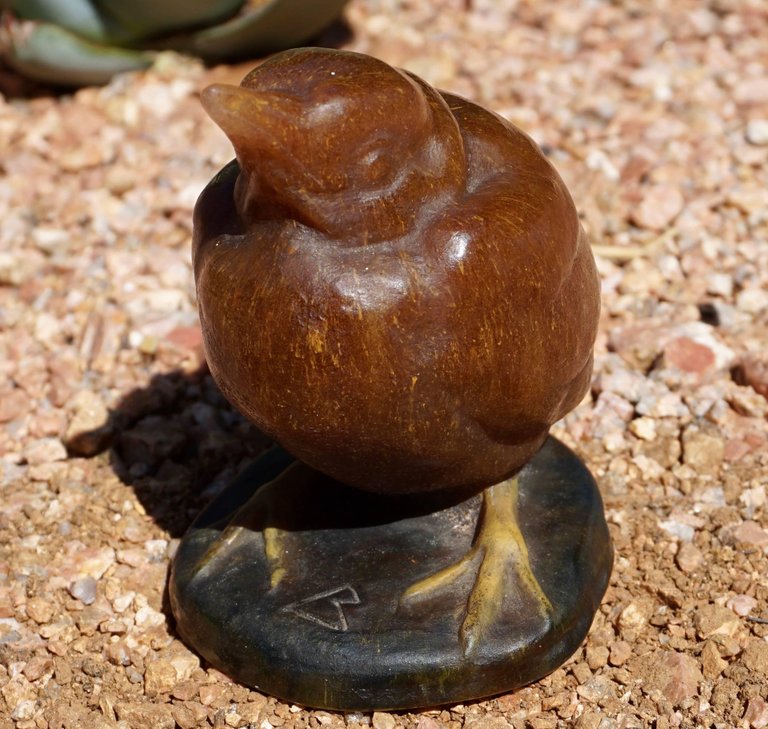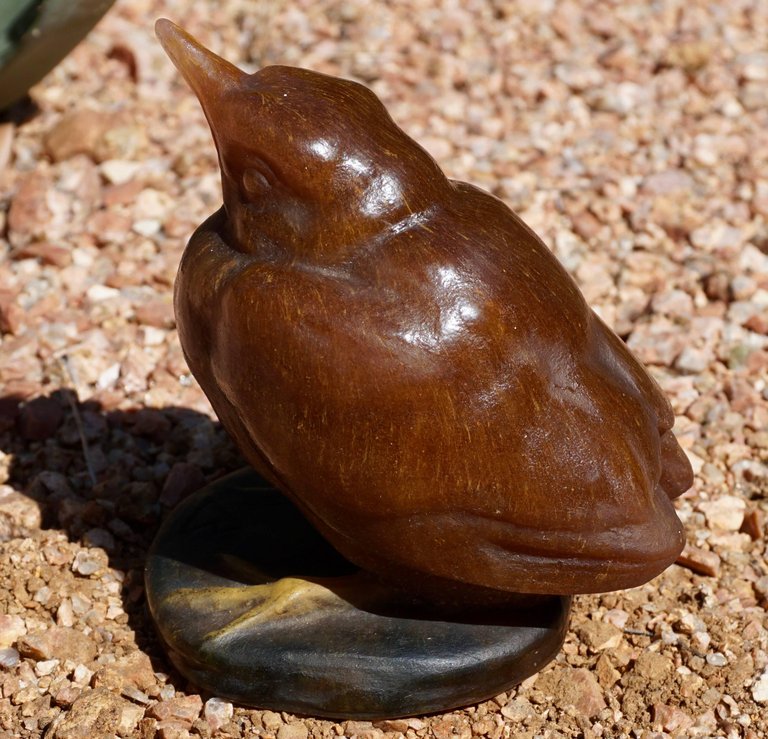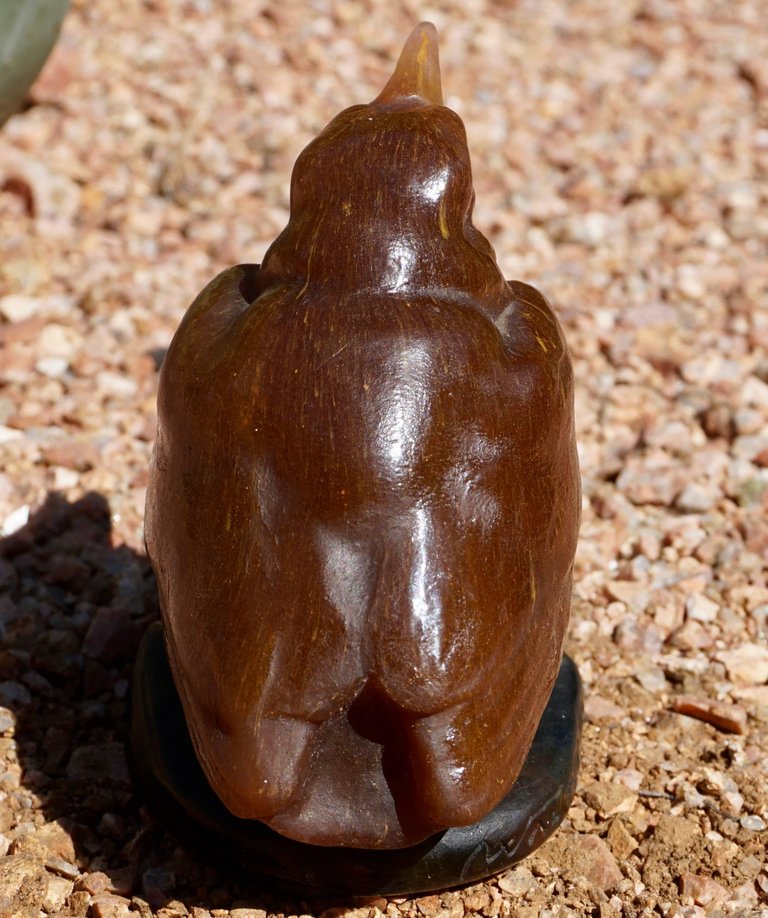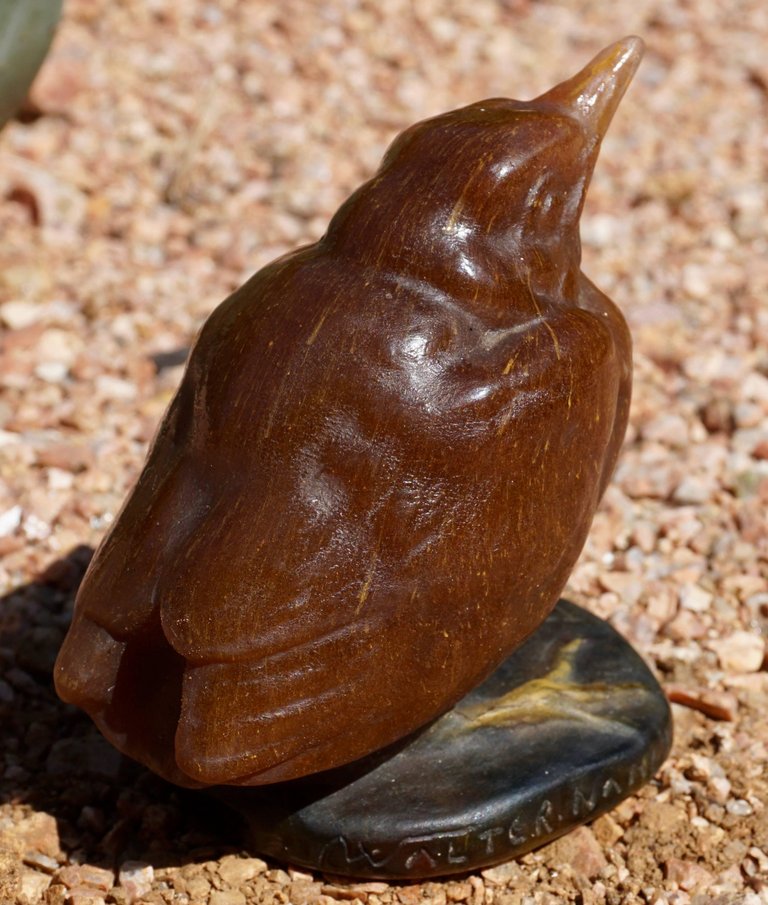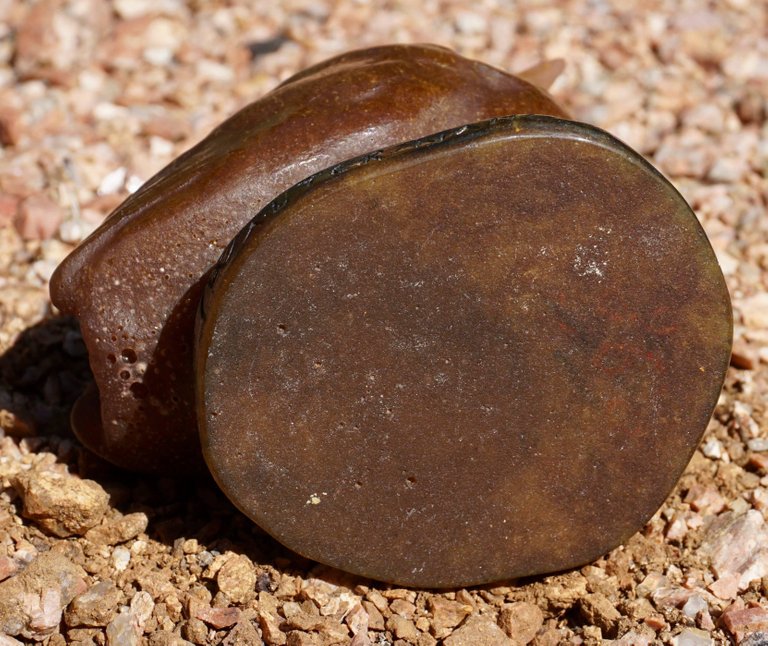Description
Almeric or Amelric Walter Henri Berge Pâte de Verre paperweight depicting a young brown bird with yellow striations. Art Nouveau Art Deco, circa 1920
Inscribed: “A. Walter Nancy” and “B” for Henri Berge
Measure: Height 4 Inches (10.5 cm) Tail to beak 5 inches (12.7 cm)
Condition: Mint (see photos)
Please consider Avantiques collection of art glass including Emile Galle, Decorchemont, Daum Nancy, Schneider, Tiffany Studios, Argy Rousseau and Loetz.
Amalric Walter first worked at the Manufacture Nationale de Sèvres, near Paris, where he decorated and glazed earthenware pieces. He won an award at the 1900 World’s Fair. There, he was probably impressed by the pâtes de verre of Damousse and Décorchemont who were also awarded.
He then decided to work for the Cristalleries Daum at Nancy, France, from 1904 or 1905, where he stayed until the first World War in 1915. There, he met a designer/modelist, Henri Bergé, with whom he made pâtes de verre always signed “Daum Nancy”, without his name nor Bergé’s name. With his help, he cast around 100 different models; but few of these pieces from this period were preserved so far. After the war, he decided to create his own glass studio at Nancy, rue Claudot. He continued his collaboration with Henri Bergé. From 1919-1935 with Bergé and other famous sculptors or designers, he cast not less than 500 models, always in few numbers due to the sophisticated technique of glass kiln casting. It is said that when he was not happy about pieces that came out from the kiln, he used to throw them onto the outside wall of his studio, saying he was a genuine perfectionist. His staff was not numerous (8-10 workers maximum).
Art Deco began to replace Art Nouveau, and arts and crafts production or small business sector became non-competitive due to high manufacturing costs. He then reoriented his production and cast simpler pieces, influenced by Art Deco design.


